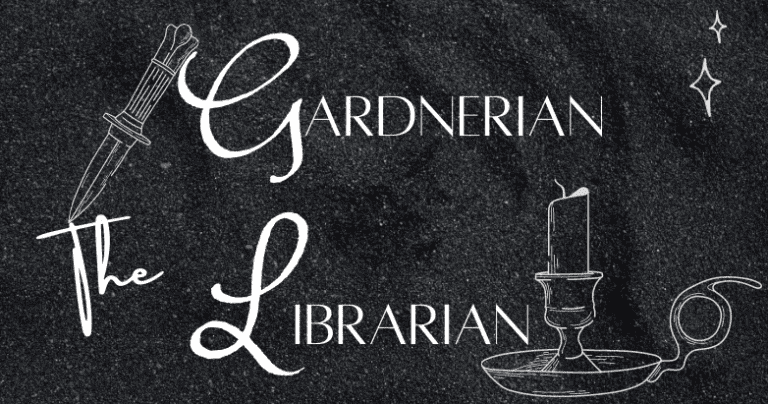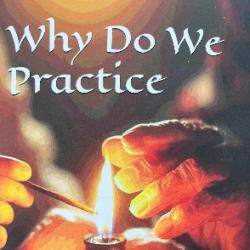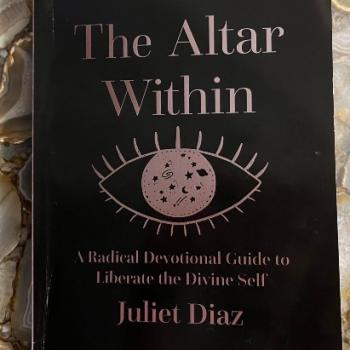Prolific writer and Patheos Pagan blogger, Jason Mankey, has released yet another great book: The Horned God of the Witches. This post will serve as my review and reflection of that piece. While I try my best to not spoil content, I will be addressing larger themes throughout the book. So, reader beware: possible spoilers ahead!
TLDR; It’s refreshing to read a pagan book on deities that isn’t dedicated to goddess worship. In true form, Mankey’s writing is both reverent and hilarious. Additionally, he is committed to providing well-researched historical facts and resources. Readers interested in the history, current understanding, and worship of several Horned Gods should get their asses to Jason’s Etsy page right now to order themselves a copy.

Pagan Books & Clam Jams
You can’t throw a rock in the New Age section of a bookstore without hitting at least fifteen books on goddesses. I think the large number of goddess-oriented books out there are responses to patriarchal and monotheistic religions. It’s a regular clam jam with Gaia and her fam. However, the reality is that not all people who come to paganism desire to solely worship goddesses. Horned God of the Witches couldn’t have come at a better time to help balance the playing field a bit.
Speaking from a Wiccan perspective, many of us are guilty of placing greater emphasis on the Goddess than any other deity. Many new Wiccans come to Wicca with trauma from religious experiences that were dominated by men and a male god. In an attempt to correct their trauma, it’s not uncommon to see newbies flock to goddess worship. As a person who has experienced trauma like that above, believe me when I say that I empathize. I, too, stuck like glue to goddess worship for years before I came to Traditional Wicca. It wasn’t until after I was initiated into Gardnerian Wicca that my healing relationship began with the Horned One. Perhaps I’ll save that story for a separate post.
Devoted to the Horned One

Horned God of the Witches reads like a devotional piece of work to the Horned God(s). To me, it felt like there was a lot of joy that went into writing this book. It’s also abundantly clear that Jason has a relationship with some or all of the Horned Gods mentioned in the book, which makes the work feel more meaningful. Each section is dedicated to a god or god aspect, to include the history, imagery, and modern worship of that deity. A few sections include rituals, spells, or meditations to assist the reader in connecting with a specific god. These methods are approachable for the new or advanced practitioner, and it’s worth trying out each one for an immersive experience.
The first three chapters cover the history, myths, and modern practice of worshiping horned gods. I love that Jason included illustrations and photographs of specific art pieces and artifacts addressed in the book. It’s one thing to talk about the Gundestrap cauldron and it’s quite another to see a photo of it. I can only imagine what that thing looks like in person! The images combined with Jason’s commentary helped paint a much clearer picture of how we arrived to today’s understanding of the Horned God.
The following fifteen chapters explore different Horned Gods or aspects of the HG through history, myth, and ritual. I was glad to see that Jason wasn’t steered away from writing about Lucifer and the WitchFather (Chapters 12, 13, and 17, respectively). While these deities are often worked with as spirits in traditional witchcraft, this book is NOT just for the Wiccan-Witch but any witch. Jason’s exposition of these deities (or spirits) is respectful and tastefully written.
The Devil’s in the Details
In chapter two, Jason spells out the most common myth surrounding Horned Gods. You know, the one about how Christians turned the Horned God into the Devil? And how pagans of yore kept their worship of the Horned One secret until Gerald Gardner basically blew our cover? What I found so utterly entertaining is that Jason writes this myth in a way that makes it sound true. It’s a myth that’s been repeated so many times by so many people that it seems true, right? Jason spent two pages writing out the myth until this bomb was dropped:
“For many people, it [the myth] was something akin to holy writ, absolutely unimpeachable and the stone-cold truth about the Horned God and the Craft. Unfortunately, except for a few points, most of what you just read is simply not true” (Mankey, Horned God, 20).
Y’all, I laughed out loud. Jason brilliantly executed that two-sentence bait-and-switch. If you know Jason, though, you know that he isn’t intentionally being condescending toward his readers. In fact, he continues on to write about how that myth became so prevalent and which aspects are partially true or utterly incorrect. Jason’s focus is on educating his readers through good research and deep reflection. In this way, his writing style is informative while remaining conversational.
Footnotes aka “Hoofnotes” *wink*
At no point does Jason pretend to have all the answers, as he is very open about the limits of his research or knowledge. He often points to specific information sources for further reading and research, whether in-text or in the footnotes. This librarian is especially fond of his use of footnotes and the complete bibliography at the end. Jason’s bibliography is what we call an “annotated bibliography”, which means that he not only includes the citation (author, title, publication date, etc.) but also a sentence or two about what the work is and why he used it.
Back to the footnotes. Some authors shy away from footnotes for fear that it will gum up the page’s visual aesthetic. Other authors might feel that they’ll somehow be viewed as less of an authoritative voice if they’re referencing other sources of information. I’ll tell you right now that it’s a huge red flag if a work of nonfiction has few citations. It’s an even bigger red flag if an author pretends to know everything on a subject, especially one with a long history of documentation. Rest assured that Jason Mankey is a paragon of virtuous research and reference. Take heed! “Heed” has always sounded witchy AF.
Post-read Reflections

I don’t know why, but it took me a hot minute to realize that the title of this book is a play on Margaret Murray’s God of the Witches. Despite the fact that he referenced Murray quite often throughout the book, I just didn’t put two and two together until about halfway through. Anyway. Margaret Murray.
While much of Murray’s work has been discredited over the decades, we cannot pretend that she didn’t play a role in modern witchcraft. Jason states as much in his book and references the more crucial parts of Murray’s theories against the better, more credible ones of today. He never slams her name or her theories because he recognizes that Murray created her theories from what information she had at the time. Was most of it speculation? Yes. Was that a common practice of anthropologists and historians at the time? Also yes. Research and access to information has vastly improved since then, largely because of the Internet.
Horned God of the Witches is an excellent example of what it means to synchronize information from many sources to create a unifying piece. Jason expertly weaves fragmented information with historical fact and a dash of educated opinion. Additionally, this book also serves as a creative piece of work with interspersed rituals and spells, poetry, artwork, illustrations, and genuinely good humor. It reads smoothly and one cannot help but hear Jason’s jovial voice in the cheekier comments.
Final Thoughts
Something I deeply appreciated was that, in rituals involving two or more people, Jason enforces consent. Our spiritual community praises sex and sexuality, but the ball drops on talking about consent. In my personal interactions with Jason, he’s been nothing but respectful of others, particularly of their identities and sexuality. So, it shouldn’t be surprising that his book is further proof of that point.
In saying all that, let me briefly tell you about Chapter Six. In it, Jason includes a ritual, called “Igniting the Fire: a Pan Ritual for Two (or More).” Y’all, it is steamy. I advise you read it by candlelight in a bubble bath with a glass of wine because damn. That’s all I’ll say about that, except that I’ve been trying to cool off for days after reading it. You’re welcome.
Raise the Horns : Jason’s Patheos Pagan blog
The Horned God of the Witches : purchase the book through Llewellyn
Stuff Sold by Jason Mankey : Jason’s Etsy store. Purchase the book & merch!
Follow me on Instagram @thegardnerianlibrarian
Listen to my conversation with Jason on Witches, Whisky, & Wit














